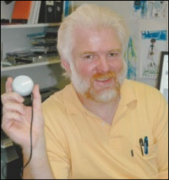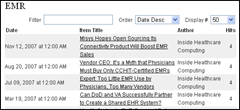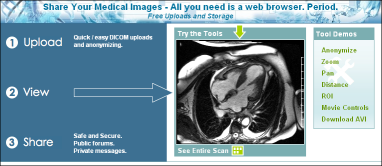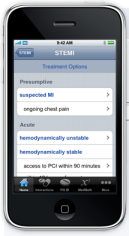From Dr. Strangelove: "Re: medical education. Medical care & physicians take a lickin’ on this study of revamping their education. The issue was never getting enough physicians trained – it was getting them to work anywhere except the big cities where they could make enough money to stay entrenched in the social class created for them in the last half of the 20th century (and pay off medical school). Their attitude… well… that’s another thing entirely. It has to do with ‘the chief god in charge’ formula taught to them in medical school and in part to the kind of personality profiles it takes to survive medical school, an internship, and residency." A sentence from the report (warning: PDF) that advocates the reform of medical education: "The overarching theme that coursed through the discussions was the urgent desire to bring medical education into better alignment with societal needs and expectations."
From MM: "Re: vendor calls. The vendor calls and e-mails have gotten completely out of hand. A confluence of a new year and a very slow economy has everyone with anything to sell trying to make contact. My assistant, who is good at spotting the legitimate calls from random sales calls, has been tricked a few times this month. I can’t take it any more! Anyone else feeling a high level of sales activity?"
From Chef Tony: "Re: sponsor ads. We’re a sponsor and I’m a reader. I really dislike the animated ads, too. Nobody is hanging around to read each screens change. I deal with huge NYC agencies whose designer kids are often clueless about what gets information out to the target market. Unless it’s Super Bowl Sunday, educate or inform with ads, not entertain."
From Doug Dinsdale: "Re: Allscripts. A stock board posting claims that Allscripts Healthmatics and Allscripts Professional were scheduled to lose CCHIT certification last week. Is that true?" I don’t think so, but I’m sure Allscripts will clarify. According to the CCHIT Certified Ambulatory EHR 2007 list, both products were certified a year ago. I’m working from memory here, but I think certification is good for two years, i.e. even though CCHIT issues new criteria every year, vendors don’t have to recertify (with one exception: Stark and anti-kickback donations require products to have been certified within the past 12 months, but not necessarily on the current criteria, and extensions are available). You just have to pay CCHIT’s annual maintenance fee (huh? CCHIT requires payment of a maintenance fee even when a vendor doesn’t use any certification services, which was the justification for the fee in the first place?) For stimulus purposes, I think both products are good for another year in any case. I’m sure someone with a more expert opinion than mine can help.
From Friend of Tim: "Re: it’s a good thing you’re a nice guy." Link. Michael Arrington, the "surly and macho" founder of the Silicon Valley blog TechCrunch that carries quite a bit of investor influence, takes a leave of absence after receiving death threats and having someone walk up to him at a conference and spit in his face. I am a nice guy – thanks for noticing (cynical and juvenile, sure, but we all have our crosses to bear).
From Dinger: "Re: Baylor/Perot. Any word on how it’s going? I’m hearing rumblings."
From Paul Molitor: "Re: HITECH. I have to respectfully disagree with John Glaser’s interpretation of HITECH. You get the same compensation per clinician regardless of when that clinician starts to use an EHR. The declining payment schedule per ‘eligible professional’ begins with the ‘payment year’ in which that professional becomes a ‘meaningful EHR user’. The start of the declining schedule is not anchored in a specific calendar year and the schedule applies to each individual. A relevant excerpt from Sec. 4311: ‘(ii) AMOUNT- Subject to clause (iii), the applicable amount specified in this subparagraph for an eligible professional is as follows: (I) For the first payment year for such professional, $15,000. (II) For the second payment year for such professional, $12,000.’ See here for the full text."
From Moose Haas: "Re: MRI/TEPR. Completely washed up. Went to their event last year. It had to be one of the worst events I’ve ever attended. Rumor is MRI is being shopped, but no takers." I appreciate Peter Waegemann’s taking the time to share some thoughts (several of which I agree with).
From Sam Butcher: "Re: physician practices delaying EMR purchases. Many groups will delay. Those interested in EMRs for business or clinical reasons have already bought. The remaining ones are resisting change claiming EMRs cost too much or aren’t better than paper. These are the same groups that resisted electronic claims years ago. It’s no surprise that many of these practices are poorly managed. The same paralysis happened with practice management stimulus during the debate over Hillarycare." That’s an interesting observation. As much as I don’t believe the Most Wired hype, it would be interesting to compare the quality and profitability of non-technology using practices to the others. There are certainly plenty of badly managed practices out there (one way to identify them is to check the name tag of the least competent person in the reception area: if that person’s last name is the same as the doctor’s, expect the worst).
From Carpluv: "Re: physician practices delaying EMR purchases. Obamanations, grand idea for financial help for EHRs, has stopped the buyers in their tracks. They’re all waiting for the handout. Great momentum change!"

From Elsie EHR: "Re: physician practices delaying EMR purchases. Same song, different year. On July 21, 2005, the NY Times ran an article about the VA’s VistA system titled ‘U.S. Will Offer Doctors Free Electronic Records System.’ The article, which was widely quoted and reprinted, painted a rosy picture of the ‘free’ system. It was eagerly read by practitioners who were actively looking for an EHR as well as those who were on the fence. All that press prompted thousands of physicians to put their EHR plans on hold so that they could ‘wait and see’ what free goodies the government would provide. Some are still waiting." Link. That’s the most over-hyped and under-delivered part of Brailer’s original plan — giving away VistA (hospital and office) to legions of clamoring providers. Flop (see: Free Kittens).
From E. Buzz Miller: "Re: event. Will there be an HIStalk reception at HIMSS this year?" Wow, lots of people have been e-mailing that question, so thanks for the anticipation! I believe that’s affirmative, so keep Monday evening free. I’m hoping to line up a couple of notable speakers, maybe (and/or holding a spot for a HISsies winner or two if they’re game). For those who went last year, I’m open to suggestions on how to maximize the networking opportunities or anything else that would make it more meaningful and memorable. I never really asked attendees what they liked best or how to make it better, so now I am. Some people would just put out food and drinks, but I’m too neurotic to just let it unfold.

From Trimaxion: "Re: Stanford. Stanford Hospital has again delayed its Epic CPOE Oncology (Beacon) go-live of their Comprehensive Cancer Center. They have serious patient safety concerns, need new development, and can’t scale the complexity of the site." Unverified, but I know some Stanford folks read and may reply. I can’t say I know of any oncology app that isn’t a work in progress, though. The protocols and pre-dose monitoring and calculations are a bear. Even the so-called "100% CPOE" hospitals usually punt on oncology (and some or all of peds, like NICU).
From Bobby Peru: "Re: layoffs. Keep up reporting them." An interesting counterpoint from Think Positive: "I would propose to you that it is no longer news worthy or interesting news if another company has a layoff. I agree in better economic times this type of insight into a company’s fortunes or failures is helpful guidance to your readers." Think Positive is right, I believe, because it is indeed neither newsworthy or all that insightful that a vendor lays off staff these days, unlike the pre-recession when such activity might foretell future problems or shifts in strategy. Maybe this is a happy medium: I’ll keep reporting layoffs (provider and vendor) only if they have been reported elsewhere. Is that good, or should I follow Bobby’s suggestion and keep running whatever I hear? Let me know.
In the meantime, in the absence of a ruling, Omnicell supposedly dismissed somewhere between several dozen and a hundred field support employees on Wednesday, but an official number of 101 was given with its Q4 report: revenue up 7.1%, EPS $0.10 vs $0.09. Those are darned good numbers if you ask me, but cutting payroll is the most common hunkering down for weathering the economic storm overhead. Cold, but smart.
It’s your last chance to cast your HISsies ballot.
Listening: brand new alternative hard rock from Hoobastank, who kind of disappeared after one hit several years ago. I like it a lot – it’s harder than their older stuff. I still hate the name, though.

Intellect Resources has a new newsletter, which I always enjoy. The "traveling Flat Healthcare IT Man" piece is fun – wish I’d thought of it for HIStalk (it’s from a children’s book called Flat Stanley). They also have a new website with both HIT positions and candidates.
A huge win for GE: Scott & White chooses Centricity Business (the old IDX billing system, I assume) for patient access, revenue cycle management, and BI.
Jobs: Cerner Clinical Systems Analyst, Pre-Sales Engineer, EHR Clinical Trainer and Implementations, IT Director. There are some nice positions and employers posted.
Here’s an interesting example of commitment to healthcare: El Camino Hospital is purchasing the physical plant of Community Hospital of Los Gatos, putting current ECH CMIO Eric Pifer in charge there. ECH is taking over June 1 when Tenet’s lease runs out, but Tenet said, screw it, we’re closing the hospital on April 10 because it’s losing money anyway and we’d rather just cut and run. Employees thought they were finally going to be safe under ECH, but now they’re all getting the axe. ECH says they can’t get it ready to re-open until the fall. As a for-profit company, it’s the right business decision for Tenet, I suppose.
Humana will contribute provider incentives to encourage participation in the Wisconsin HIE (would one sound that out as WHEE or WHY?)
While I’m thinking about it, I’d like to thank the companies that sponsor HIStalk and HIStalk Practice. It takes guts to put your ad (flashy or not) beside some of the stuff I write. For most of them, it’s not a sterile transaction handled by detached PR people — it’s company executives who want to support what we do and who pull the strings to get the bean counters to write a check to a vaguely untrustworthy-looking enterprise working out of a PO box. Make your own decision on what to buy or from whom, but if you get the chance, thank them for their support.
Investor’s Business Daily covers athenahealth in an article purportedly about subscription EMRs, but mostly about ATHN stock.
If you’ve e-mailed me lately, hang in there and I’ll get back to you. It’s nearly impossible for me to do much more than skim the inbox until the weekends since HIStalk, HIStalk Practice, and HIStech Report are kind of in full swing at the moment (there will be record readership in HIStalk this month, which is surprising since the first several days were a long holiday weekend for most folks).

Speaking of CHLG, I heard this from Vendor Val: "El Camino Hospital plans to bring CHLG up on their Eclipsys Sunrise computer system and introduce physician order entry. Great news – for their competitors. CPOE had some success at El Camino because the city subsidizes the hospital and the hospital subsidizes the close-knit Independent Physicians of El Camino with free eClinicalWorks. Of course these MDs are very tech-savvy and have link-ups with the hospital’s Eclipsys Sunrise systems and can view lab data, medical histories, and procedures from the comfort of their own offices (they attract a lot of Stanford Hospital doctors who cut their teeth on computer glitches, spotty interfaces, and lots of downtime). But Los Gatos is a diverse collection of paper-happy independent physician practices who have no incentive to invest in technology and many are aging retirees with no interest in learning new programs."
Nextgov reports that Rob Kolodner will be staying on as ONCHIT.
California’s ED doctors sue the state, claiming that the ED system will collapse without additional funding. The state is ranked last in ED access and 43rd in ED payment. The docs claim EDs are getting the state’s burden of caring for the poor and elderly dumped on them. The state’s Department of Health Care Services had a cheery response: more budget cuts are likely, with proposals on the table to cut Medi-Cal’s budget by $1.1 billion and cutting physician reimbursement on March 1. I’m no expert, but this sounds like a seriously explosive situation there since I remember how ugly the King-Drew situation got.
Rich Elmore reminds me that his blog post mentioned the possibility of delayed provider EMR decisions because of Uncle Sam’s potential golden handshake.

St. Luke’s Regional Medical Center (ID) restructures its 28 IT positions into 18, forcing incumbents to play musical chairs to decide which 10 get the boot. It seems that hospitals are falling into one of two camps: (a) those who have big-ticket IT projects underway and aren’t about to jeopardize them to save a few IT salaries, and (b) those who never really believed that technology was all that valuable and are robbing the IT operational and capital budgets for more critical needs.
A UK survey calculates that dry cleaners there found an estimated 9,000 USB sticks, some no doubt full of sensitive information, that were left in the pockets of clothing dropped off.
E-mail me.
HERtalk by Inga
From Comforter: “Re: layoffs. Cabell Huntington laid off between 30 and 40 middle managers a couple of weeks ago, saving between $3 and $4 million per year. Many were-long time employees, with more than 20 years of service. One questioned how the hospital could have committed $40 million to Cerner a couple of years ago, but now finds itself in dire straits. Security escorted the employees out of the building immediately, standard policy for sure, but compounding the duress of getting fired.” The local paper reports that 40 jobs were eliminated earlier this month.
From Jason: “Re: Faxton-St. Luke’s Healthcare. You may have already heard, but Faxton St. Luke’s is an Eclipsys client.” Thanks for the correction. I erroneously said they had Cerner.
From Inside Outsider: “Re: Rob Kill. Is the new CEO of Virtual Radiologic Corporation really named Rob Kill? First time I’ve ever heard of a person named for breaking two commandments." Funny, although I bet Rob’s heard it too many times to do anything except grimace and give a polite, dry two-beat chuckle (HAH ha).
From Ziggy: "Re: Hospital marketing. With all the troubling economic news, budget cuts, and all, I am wondering the effect on hospital marketing? What are other hospitals finding to be most effective for the money?” Medicare fraud?
Sometimes it’s the little things about a company that can turn you off. Last September, I semi-seriously made fun of this Med Com USA press release because the first sentence went on forever. Lo and behold, here’s a new one just about like it: “MedCom USA, Inc. (OTCBulletinBoard: EMED) a leading provider of HIPAA compliant healthcare and financial transaction solutions for the healthcare industry, which recently signed letters of intent to acquire PayMed USA, LLC and Absolute Medical Software Systems, a leading provider of HIPAA compliant medical, dental, healthcare and financial transaction solutions for the healthcare and dental industry is pleased to announce that it has appointed an additional board member resulting in three independent board members and one inside member.” But what annoyed me the most was that in order to open their Web site with my Chrome browser, I was required to upgrade to a newer version of Flash (which I blew off, because I decided I didn’t need to see their site that badly.) If you read the press release, you’ll notice they had some high-level turnover, so I’ll give them the benefit of the doubt and assume they haven’t had a chance to focus much on marketing.
With the meltdown of Satyam Computer Services, other outsources like EDS, Perot, and ACS hope to pick up a few new clients. One consultant estimates Satyam will lose $2 billion worth of business to competitors over the next two to four months.
Tennessee expands its medical video network to allow physicians to treat pregnant women in rural counties. BCBS of Tennessee Health Foundation has provided $1.8 million in funding to allow perinatologists to view live ultrasounds remotely.
HIMSS announces its support for HIT provisions under consideration by Congress, citing three reaons: 1) the economy will benefit as jobs are created; 2) patients will benefit because of increased safety, and, 3) doctors will benefit because it reduces the current cost barriers. They don’t mention this, but of course it would be helpful to their 350 corporate members (and thus they themselves) as well.
A survey finds that hospitals and health systems are cutting back on both capital spending and unprofitable healthcare services. Hospitals are worried about declining investment values, shrinking margins, and stagnant philanthropy. This report reminds me of our own little survey to your right. If you are a vendor or a hospital, let us know what effect the economy is having on your world.
I wonder if this is just a co-incidence? Mr. H and I start using Twitter to keep abreast with all things HIT. Three weeks later Twitter seeks to raise at least $20 million in Series D funding. That’s a bunch of tweets.
The U.S. Bureau of Labor Statistics reports that retail prices for hospitals increased 5.9% in 2008, compared to 8.3% the year before. Wholesale prices for hospital services increased 1.5%, compared to 3.9% in 2007.
A CDC report finds that the total number of outpatient surgeries increased from 1996 to 2006, from 20.8 million to 34.7 million visits. Outpatient surgery visits accounted for about one half of all surgery visits in 1996, but nearly two thirds of all surgery visits in 2006.

Eastern Maine Medical Center announces 76 job cuts, reductions in overtime, and holds on several projects. The hospital was a 2008 Davies Award winner. The local paper also noted that the hospital’s CEO received almost $700K in compensation and benefits last year.
Wetzel County Hospital (WV) receives government approval to seek up to $6 million in bonds, which includes $175,000 to upgrade its CPSI EMR and Payroll applications.
Trustees with Regional Medical Center (SC) approve a $78,000 contract with HIMformatics to oversee its Cerner IT project.
Tenet Healthcare says it expects a Q4 net income of $5 million and $63 million in earnings for 2008.
Would the average person pay $20 to e-mail a medical specialist for advice? A physician group is betting on it, having launched a Web site designed to give anyone with a medical question the chance to receive medical advice, medical recommendations, and medical information from specialized medical doctors.

Revenue cycle management company MTBC outfits its own airplane to be a flying promotional platform. Well, why not? Guess it beats the yellow pages, especially if you’re marketing to pilots.
Norton Healthcare (KY) selects Unibased Systems Architecture to provide resource management software and services.
ICA announces the deployment of its data and technology aggregation solution at Lourdes Hospital (KY).
E-mail Inga.













































"A valid concern..." Oh please. Everyone picks the software they like and the origin of that software is an afterthought.…